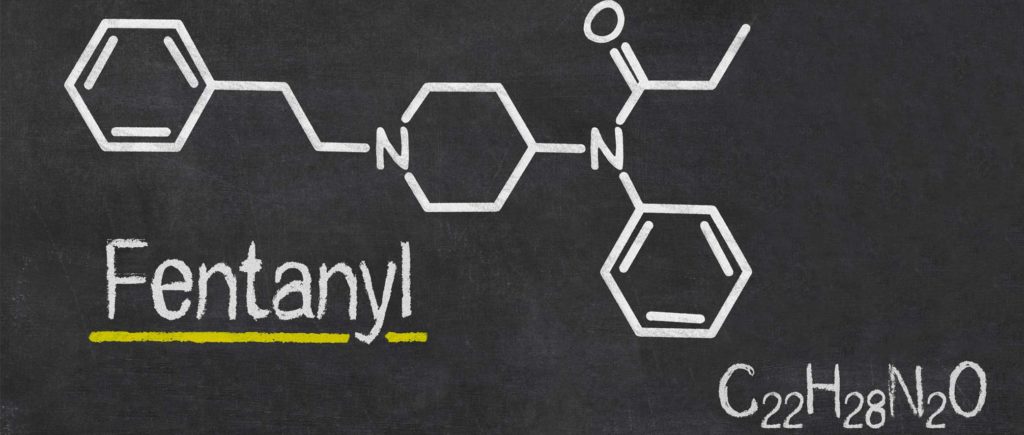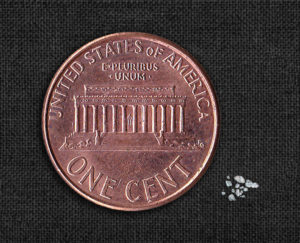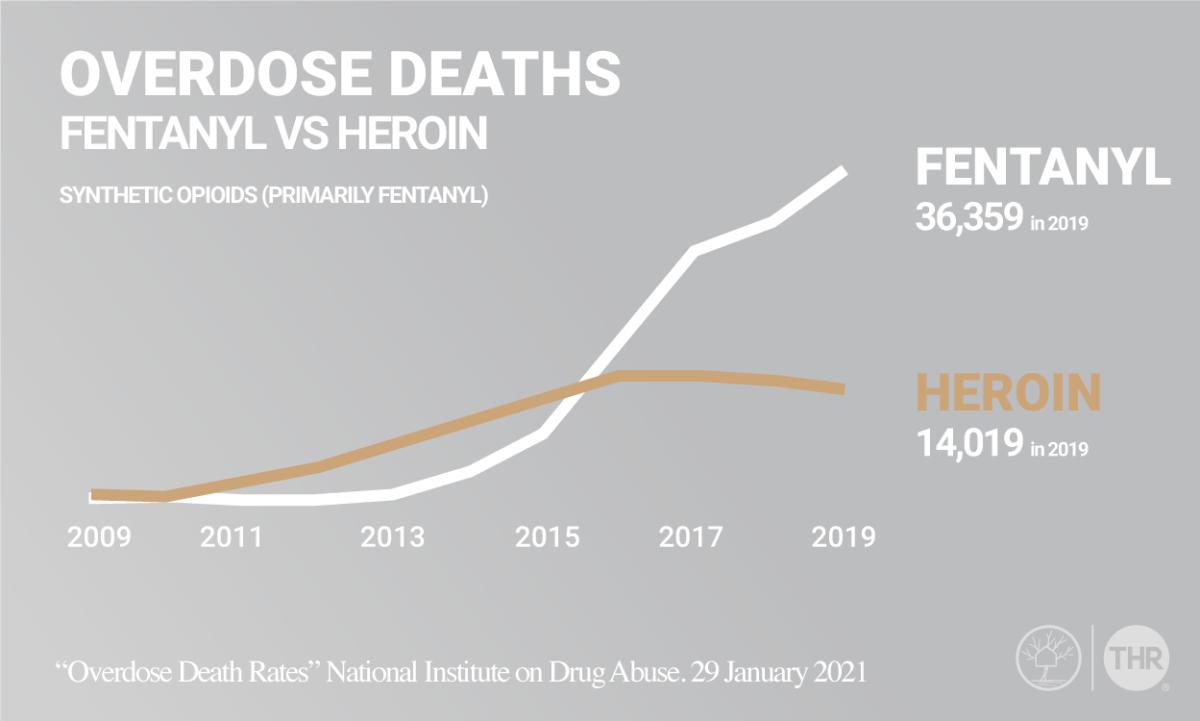
Fentanyl use disorder involves the misuse of fentanyl, prescribed or otherwise. It is a chronic, relapsing condition that is often accompanied by other substance issues.
Fentanyl is a synthetic opioid originally developed to manage end of life pain. It is the most potent opioid available, 100 times stronger than morphine and 50 times stronger than heroin. Because of its strength, fentanyl is highly abusable, addictive, and dangerous. It is the cause of more overdose deaths than any other drug and a lethal dose is smaller than the average finger nail.
Although it is legal to produce fentanyl in the US for medical use, most fentanyl in the US is produced illegally and sold on the street.
Fentanyl Legal Status and Drug Classification:
Dr. Paul Janssen created fentanyl in 1959. His company, Janssen Pharmaceutical patented the drug with the aim to use it for treating patients suffering from extreme pain. Originally fentanyl was reserved for people post-surgery, end of life care, and cancer patients with chronic pain.
But, like all opioids, fentanyl also creates euphoric and mood elevating effects which makes it incredibly addictive, which is what helped it start a 3rd wave to the ongoing opioid crisis.

Fentanyl is the most powerful opioid available. It’s 50x stronger than heroin and 100x stronger than morphine [1] [2].
When prescribed by a doctor, there are 3 ways fentanyl can be taken. It can be injected, absorbed into the skin, absorbed from a lollipop or lozenge.
When fentanyl is used illegally it is usually smoked as a powder, injected, put in eye droppers and nasal sprays, or taken as a pill [3]. But most people who use fentanyl illegally don’t realize they are taking it. Fentanyl costs very little to make illegally, which is why dealers frequently cut it into other drugs like meth, cocaine, heroin, and ecstasy to maximize their profits.
READ MORE: What Does Fentanyl Look Like?
Fentanyl’s potency is the reason that it’s so dangerous. Between its high abuse potential when it’s prescribed and that it’s frequently mixed into other street drugs, no drug causes more overdoses per year than fentanyl.
Synthetic opioids are the leading cause of overdose deaths in the United States. In 2019, fentanyl overdose deaths jumped to nearly 40,000 compared to the previous year — making fentanyl responsible for 71% of 2019’s overdose deaths.

Fentanyl has many of the same signs as other pain-killer opioids. Including small pupils, nodding off due to drowsiness (even in midsentence), weight loss, and withdrawal side effects.
If you think someone is abusing fentanyl you can look for signs of the drug or its withdrawal symptoms, like:
Like all abused drugs, fentanyl goes by many names. If you know someone using some of the names below, it could be a sign they are abusing fentanyl.
Treatment for Fentanyl abuse often begins with an intervention, followed by physical detox and attending a rehabilitation program.
If someone struggling with Fentanyl hasn’t considered treatment, they might need an intervention to help them accept treatment. An intervention could be the difference between life or death.
Detox ends the body’s physical dependence to fentanyl. In a medically supervised detox, doctors can prescribe a taper which helps wean people off the drug. In addition to reducing the risk of symptoms like hallucinations, a taper also makes detox less painful [21].
Like other opioids, fentanyl withdrawal can be a very uncomfortable process. Using a medical detox significantly decreases the risk of relapse and complications. However it’s important to understand that detox does not help address the root cause of addiction.
After long term fentanyl abuse, certain complications may arise. Inpatient care is best for helping get people stabilized after rehab. During inpatient care, patients live in a medical facility where they receive 24-hour care. Near the end of inpatient care, patients can see counselors who begin therapy and provide recommendations to rehab facilities.
Provides a sober living residence within the facility, 24-hour care, and a variety of treatment programs such as counseling, group therapy, coping skills, and relapse prevention.
The best rehab facilities address the root cause of addiction by focusing on three key areas:
Once in treatment, several other things can help bring fentanyl addiction into remission:
Recovery doesn’t end after rehab. Aftercare is a way to reinforce the foundation of your sobriety by working through triggers that emerge in everyday life, practicing coping skills, and connecting with support resources. All good aftercare focuses on
Disclaimer:
No content on this website should ever be used as a substitution for direct medical care and advice from qualified physician clinician.
Talk to a Treatment Advisor Today